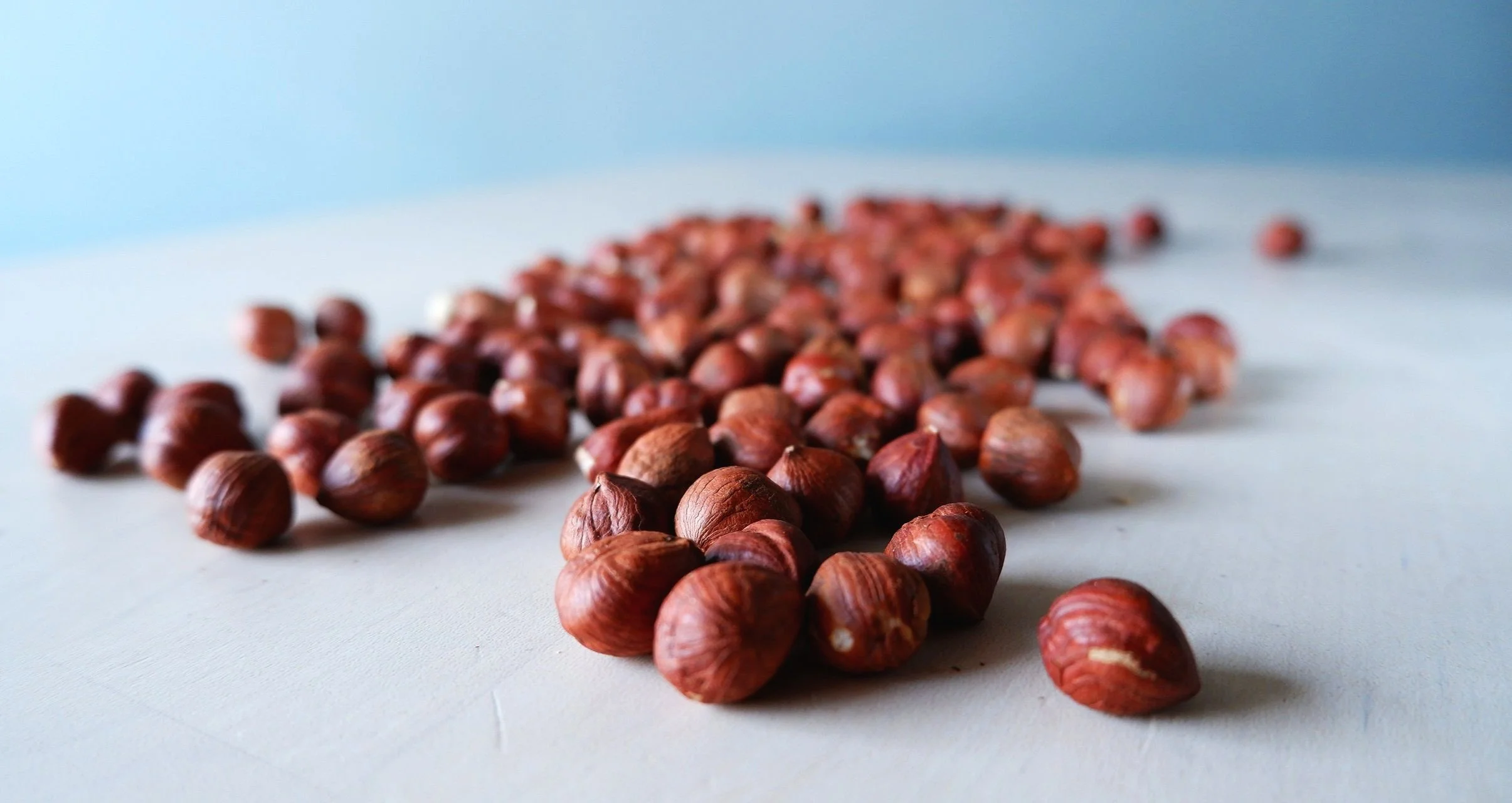Hazelnuts
I’ve previously done both hazelnut milk and hazelnut chocolate spread recipes, but I’ve never actually broken down the nutritional benefits of the incredibly tasty hazelnut. Let’s do that today!
Flavour and fabulous fat
I looove hazelnuts. They have incredible flavour and are fantastic as an ingredient or as garnish. The nut comes from the corylus or hazel tree, which grows in many variants around the world - the nuts of all of them are edible.
You can eat hazels raw, roasted, toasted, ground or made into a paste/butter, just like most nuts really! It’s almost unbelievable the flavour these nuts pack naturally. Also like other nuts, they are super nutritious and have a really high calorie content, which is fantastic to utilise for a breakfast before a demanding day, for snacking when out for a hike, or for other strenuous activities when you need to keep your calorie intake up.
About 20 kernels contain around 17g of fat! Isn’t that amazing! Hopefully if you’re reading my posts regularly you know by now that healthy fats are a great thing to get in your diet. If you need a reminder, check out my fat is not the enemy post. They are also quite high in protein, carbs and fibre, as well as thiamine, copper, a large amount of manganese and fair bit of magnesium. We looked at manganese benefits in my recent poppy seed post, so check that out for a refresher on why it’s so amazing.
Hazelnuts are full of wonderful antioxidants. This can help prevent cancer and heart diseases, among other things. For example, it may lower your cholesterol levels, and the combination of a lot of the great nutrients in the nut can help regulate your blood pressure! Note that most of the antioxidants are in the skins, so to get this benefits you want the skins on - it might also be that some of the antioxidants will disappear with roasting, so for the full health benefit here; raw and skin on is the way forward.
Hazelnuts can also lower inflammation in the body, and studies have shown that these changes were noticeable in overweight people after consuming hazelnuts regularly over 12 weeks.
The only possibly negative side to be aware of (apart from a possible allergy of course!) with hazelnuts, is that like many other nuts they contain some phytic acid. This is a natural substance found in lots of foods, and it actually has both good and bad sides to it. People with a normal, varied diet don’t need to be concerned about the minimal amount of phytic acid they get from certain foods (especially as it can also have positive effects!), but if you have a restricted diet that contains a lot of foods (nuts, beans…) that contain phytate, and you are concerned about this, you can soak the nuts in filtered water for a few hours and then drain and rinse them.
Check out my TWO different versions of hazelnut chocolate spread in recipes, and of course give hazelnut milk a go!
Do you like hazelnuts? How do you use them in the kitchen? Message me on Instagram @TheFromScratchBody!
